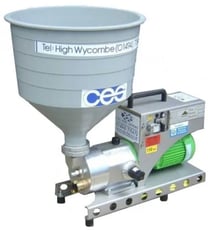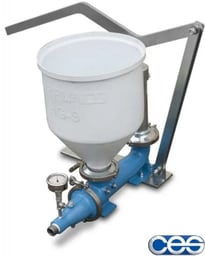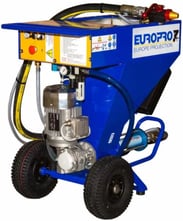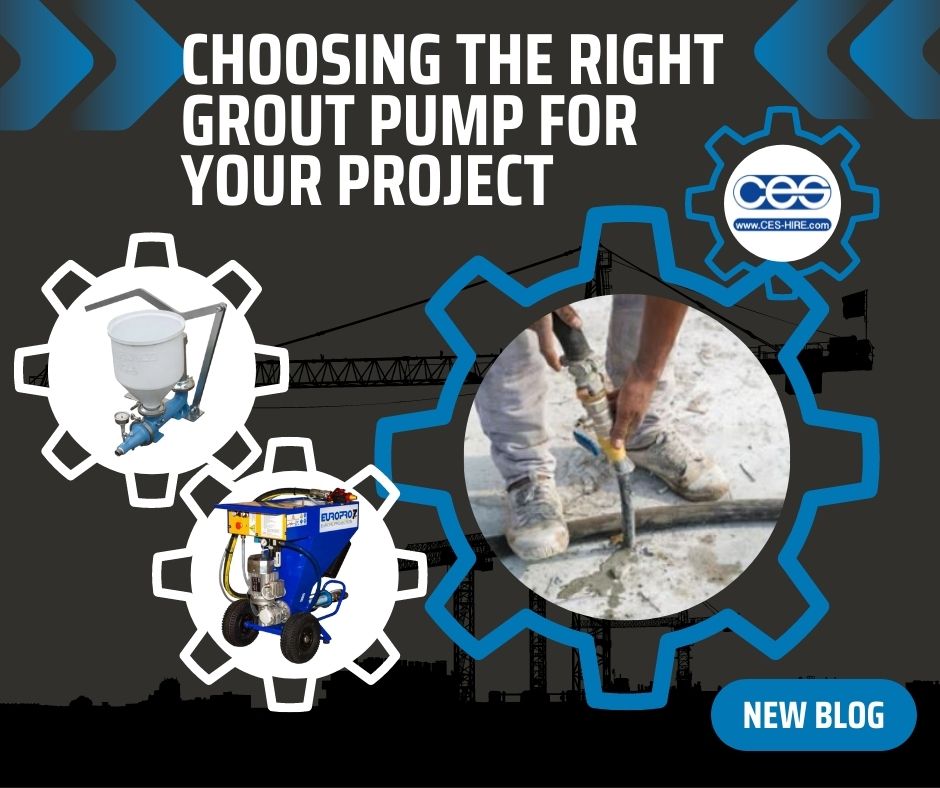Pick The Perfect Pump
Grout pumps can be used for many different projects so it is important that you seek guidance when selecting the correct machine for your material. Take a look at our previous blog to learn a little more about grout pumps and the amazing array of applications they can be used for. The team at CES will be more than happy to help advise you on the right grout pump to hire or purchase but as a starting point take a look at what to consider when picking the perfect pump.
Take Your Pick
The type of pump you use will probably be determined by the size of the job you are completing. At CES you will find a variety of pumps including manual hand operated pumps, electric grout pumps and diesel mixer pumps. Hand operated manual pumps such as the Airplaco HG-9 Hand-operated Grout Pump are convenient since they are lightweight and compact so will fit into the smallest space. They do not need a power source and are controlled by the operator which makes them ideal for smaller more intricate jobs such as levelling a concrete slab, filling a crack or grouting door frames. The user has full control over the output so they can grout with accuracy.
 Whilst a hand operated machine is incredibly portable, larger machines will also have wheels and/or a towbar to enable them to be manoeuvred on site or between jobs. Larger electric or diesel machines are useful for bigger projects since they have a higher output which is speed controlled by the machine. They will pump more material both vertically and horizontally in less time. CES have a range of electric machines such as the InoBeam M8 Peristaltic Grout Pump, Euromair DropPro 8P and the Euromair Compact Pro 30. Our Diesel range includes Putzmeister models like the SP11 LMR and TMR and the Euromair Compact Pro 80. Within these pump categories you will find piston, helical rotor (worm drive pumps) and peristaltic pumps. Piston pumps will generally work with higher pressure and lower output and a worm pump the reverse, a lower pressure but a much higher output/flow rate.
Whilst a hand operated machine is incredibly portable, larger machines will also have wheels and/or a towbar to enable them to be manoeuvred on site or between jobs. Larger electric or diesel machines are useful for bigger projects since they have a higher output which is speed controlled by the machine. They will pump more material both vertically and horizontally in less time. CES have a range of electric machines such as the InoBeam M8 Peristaltic Grout Pump, Euromair DropPro 8P and the Euromair Compact Pro 30. Our Diesel range includes Putzmeister models like the SP11 LMR and TMR and the Euromair Compact Pro 80. Within these pump categories you will find piston, helical rotor (worm drive pumps) and peristaltic pumps. Piston pumps will generally work with higher pressure and lower output and a worm pump the reverse, a lower pressure but a much higher output/flow rate.
 Pump It Up
Pump It Up
When selecting your machine from the above pump categories, there are aspects of the machine design and additional parts to consider such as the hose size, the output pressure and capacity, the capacity of the mixer and hopper and its vertical limits. Consider your power supply if opting for an electric pump and how this will work with hoses. When grouting it is suggested that you keep pumping distance to a minimum and ensure the hoses run as straight as possible. Shorter hoses reduce the build-up of back pressure which allows a better flow of material. The hose diameter will also affect pumping capabilities. If the hose is too small, this will restrict the pump outlet creating further back pressure and reduce the efficiency. If you have to use a long hose due to power supply limitations, we suggest starting with a hose of a larger diameter and then reducing to a smaller hose closer to the point of grouting. This will create as little back pressure as possible.
 Under Pressure
Under Pressure
The pressure of a pump is essentially how far or high it can pump the grout material. Opting for a pump that pumps at a low pressure may save you money on an initial outlay (these pumps tend to be cheaper). However, if you are grouting tunnels or repairing sewer lining you will require a high-pressure grout pump which may be more costly.
A Material World
 You will need to consider your aggregate size and material consistency when choosing your grout pump. Aggregates may be anywhere from fine (0.5mm) to coarse (6mm) and certain machines will suit different sizes. If you opt for a heavy-duty diesel machine, you may find it copes with grains up to 6mm. Aggregate is needed to add bulk to the material and increase the strength. Certain materials such as epoxy and cement are incredibly thick so don’t pump so well; your material should be a flowable/pourable consistency for successful pumping. To achieve the correct consistency the water and cement rations should be about 0.35 and if sand is being added, keep it to a minimum to prevent blockages. However here at CES we always recommend checking with the grout supplier to see what they specify for their products.
You will need to consider your aggregate size and material consistency when choosing your grout pump. Aggregates may be anywhere from fine (0.5mm) to coarse (6mm) and certain machines will suit different sizes. If you opt for a heavy-duty diesel machine, you may find it copes with grains up to 6mm. Aggregate is needed to add bulk to the material and increase the strength. Certain materials such as epoxy and cement are incredibly thick so don’t pump so well; your material should be a flowable/pourable consistency for successful pumping. To achieve the correct consistency the water and cement rations should be about 0.35 and if sand is being added, keep it to a minimum to prevent blockages. However here at CES we always recommend checking with the grout supplier to see what they specify for their products.
Machine TLC
Every machine needs TLC in the shape of repairs, maintenance and servicing. This is something to consider when selecting you grout pump as some may need more financial investment than others. Grout pumps have many moving parts and require thorough cleaning after every use to ensure grout doesn’t build up on the internal components. CES service a whole variety of grout pumps so be sure to check with us in to keep your machine pumping to perfection.
FINAL TIP: DON’T FORGET, IT IS EASY TO ADD MORE GROUT BUT ALMOST IMPOSSIBLE TO REMOVE…KEEP THAT IN MIND AND HAPPY PUMPING!



